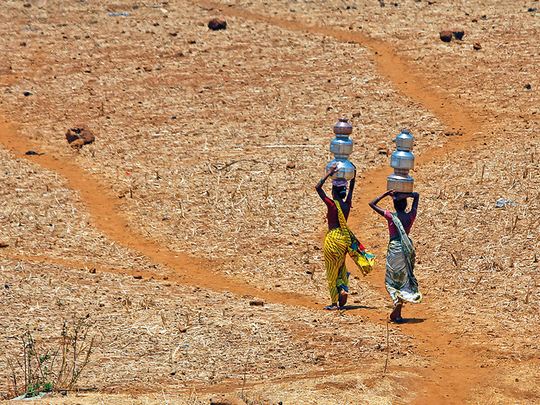
Washington: Temperature data suggest last month was the third-hottest June on record globally, confirming 2017 will almost certainly make a trifecta of annual climate records, with 2015, 2016 and 2017 being the three hottest years since records began.
The figures also cement estimations that warming is now at levels not seen for 115,000 years, and leave some experts with little hope for limiting warming to 1.5⁰C or even 2⁰C.
According to new figures from the US National Oceanic and Atmospheric Administration (Noaa), June 2017 was the third-hottest June on record, beaten only by the two preceding Junes in 2015 and 2016.
The Noaa data show combined land and sea-surface temperatures for June 2017 were 0.82⁰C above the 20th century average, making a string of 41 consecutive Junes above that average.
June 2016 still holds the record at 0.92⁰C above the 20th century average, followed by June 2015 which was 0.89⁰C above the baseline.
The data line up closely with Nasa figures released last week, which are calculated slightly differently, finding the month was the fourth-hottest on record — with June 1998 also being warmer in their data set.
Based on the Nasa data, climate scientist and director of Nasa’s Goddard Institute for Space Studies Gavin Schmidt estimated that 2017 was probably going to be the second-warmest year on record after 2016, but would almost certainly be among the top three hottest years.
The June data see all of the first six months of 2017 sitting among the three warmest months on record, making it the second-hottest first half of a year on record — again, beaten only by the previous year.
The near-record temperatures continued this year despite the passing of El Nino, which normally warms the globe, and its opposite — La Nina — currently suppressing temperatures.
Fossil fuels
The warming trend is almost certainly caused by greenhouse gas emissions — mostly the result of burning fossil fuels — with many studies showing such warm years would be almost impossible without that effect.
Last year, Michael Mann from Pennsylvania State University published a paper showing the then-record temperatures in 2014 would have had less than a one in a million chance of occurring naturally.
“We have a follow-up article that we’ve submitted showing that the likelihood of three consecutive record-breaking years such as we saw in 2015-2017 was similarly unlikely,” he told the Guardian over email.
“In short, we can only explain the onslaught of record warm years by accounting for human-caused warming of the planet.”
Andy Pitman from the University of New South Wales in Sydney, Australia, said the onslaught of very rapid warming in the past few years is likely a result of the climate system “catching up” after a period of relative slow warming caused by natural variability — the so-called “hiatus”.
“I do not think the recent anomalies change anything from a science perspective,” he said. “The Earth is warming at about the long-term rates that were expected and predicted [by models].”
But Pitman said the ongoing trend was “entirely inconsistent” with the target of keeping warming at just 1.5⁰C above pre-industrial temperatures. Current trends suggest the 1.5⁰C barrier would be breached in the 2040s, with some studies suggesting it might happen much sooner.
“In my view, to limit warming to 2⁰C requires both deep and rapid cuts and a climate sensitivity on the lower end of the current range,” Pitman said.
“I see no evidence that the climate sensitivity is on the lower end of the current range, unfortunately.”
“It would be a good idea to cut greenhouse gas emissions rather faster than we are.”
5 ways climate change hits you
1. Decrease in natural drinking water
The rivers and lakes from which humans source drinking water are slowly being drained, leading to droughts, which will lead to higher costs for drinking water.
2. Melting glaciers
When glaciers melt, water levels rise. These cause floods, which kill thousands of people and damage their homes and crops.
3. Increasing temperatures
Now that there is more CO2 in the air, the heat is trapped within the atmosphere instead of moving back into space, making it unbearably hot and allowing for more insects and microbes to thrive.
4. Wildfires
Many scientists believe that wildfires start because of the extreme heat that is trapped within our atmosphere.
5. Increase in food prices
It will cost a lot more money to produce and grow food in high temperatures and given the lack of fresh water.












